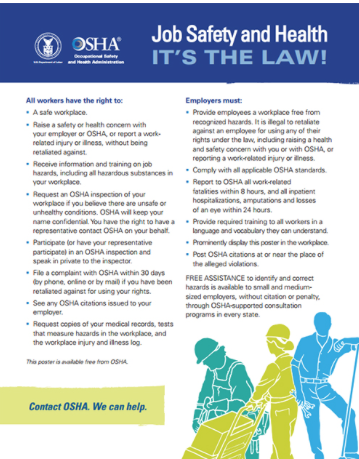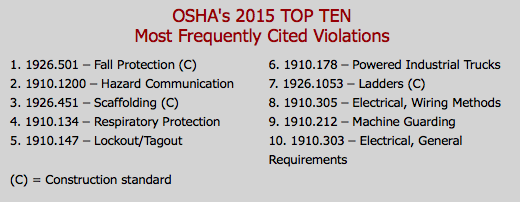Unlike the cost of a parking and speeding ticket, over the past two and half decades the amount of OSHA penalties for citations imposed on employers have not increased since 1990.
For years OSHA has petitioned Congress to increase the civil penalties they can impose when an employer is cited for a safety violation. For years the Assistant Secretary of Labor for OSHA has made an annual pilgrimage up to the Hill where he or she has pounded on the table demanding that Congress enact OSHA reform legislation to increase the maximum penalties OSHA can assign.

Not one for big government, I do believe that in order to get the attention of some employers you have to bare some teeth and make such behavior painful. When you put things this into prospective, it is pretty bad when employers can be fined more for mistreating cattle on federal lands than for allowing an employee fatality.
In 2015 with a Republican-controlled House and Senate, and through the backdoor comes a Congressionally-mandated increase to maximum OSHA civil penalties of nearly 80 percent. These new increases took many of us in the health and safety profession by surprise. The proposed changes were not widely publicized and the final bill was buried in the 1600 page federal budget.
Hidden deep within the Bipartisan Budget Act of 2015 signed by President Obama in November 2015 was a provision called the “Federal Civil Penalties Inflation Adjustment Act Improvements Act of 2015” which requires OSHA to significantly increase its civil penalties.
Some say it was a bizarre parting gift by now former Speaker of the House John Boehner, no doubt part of his effort to “clear the barn” for his successor.
Color me astounded, but if you ask me this was way past due. Especially when you consider that the average cost of a speeding ticket has nearly increased 3-4x’s since my youth; and with those kinds of hefty increases I’m pretty sure it would have been a huge deterred to me as a teenager back in the day. Funny how that works, isn’t it?

Until now, OSHA was exempt from a requirement that federal agencies increase fines to mirror inflation. So in an effort to close the gap from prior stingy congressmen, there is a one-time “Catch Up Adjustment” to account for the lack of periodic penalty increases that will occur this calendar year.
After the initial, sticker-shock adjustment, OSHA will now — like other Federal agencies — review and adjust its penalty amounts to keep pace with inflation.
To fulfill these changes, OSHA is projected to adjust the civil monetary penalties through an Interim Final Rule sometime soon. Under the law, the increased penalty adjustment must come into effect by August 1st. The new law gives OSHA the discretion not to increase the fines along these lines, but we all should fully expect them to do so. The Agency has been advocating for higher penalties for years.
So what this means is that under the current penalty cap, a serious violations of $7,000 would grow to $12,600, and the penalty limit on willful and repeat violations would increase from $70,000 to $126,000.
On October 7, 2015, Assistant Secretary of Labor for OSHA, Dr. David Michaels, told a House subcommittee that the “most serious obstacle to effective OSHA enforcement of the law is the very low level of civil penalties allowed under our law, as well as weak criminal sanctions,” and that “OSHA penalties must be increased to provide a real disincentive for employers accepting injuries and worker deaths as a cost of doing business.”

This law does not automatically apply to states regulated by State Plans such as the state of Kentucky’s, but since State Plan programs must be at least as effective as Federal OSHA, many are of the opinion that Federal OSHA is likely to push for state plans to increase civil penalties as well. It will be interesting to see how this plays out over the next year or two.
With that said, now is a good time for employers to take a look at their current safety programs and:
Ensure that your safety programs are complete and up to date;
Ensure that employees receive all necessary safety training, can establish an understanding of the training, and that all training is well-documented. Remember, to OSHA if it’s not documented then it didn’t happen;
Conduct routine hazard assessments of your workplace and abate any identified hazards as quickly as possible; and
If you haven’t already, consider incorporating a recognized Safety Management Systems into your organization’s operational process to measure your success.
While the significance of protecting a company’s OSHA record to avoid potential repeat citations down the road will remain, the financial impact of an OSHA citation will now become more costly, especially for small employers.
Be Safe My Friends
Keven Moore works in risk management services. He has a bachelor’s degree from University of Kentucky, a master’s from Eastern Kentucky University and 25-plus years of experience in the safety and insurance profession. He lives in Lexington with his family and works out of both the Lexington and Northern Kentucky offices. Keven can be reached at kmoore@roeding.com.























